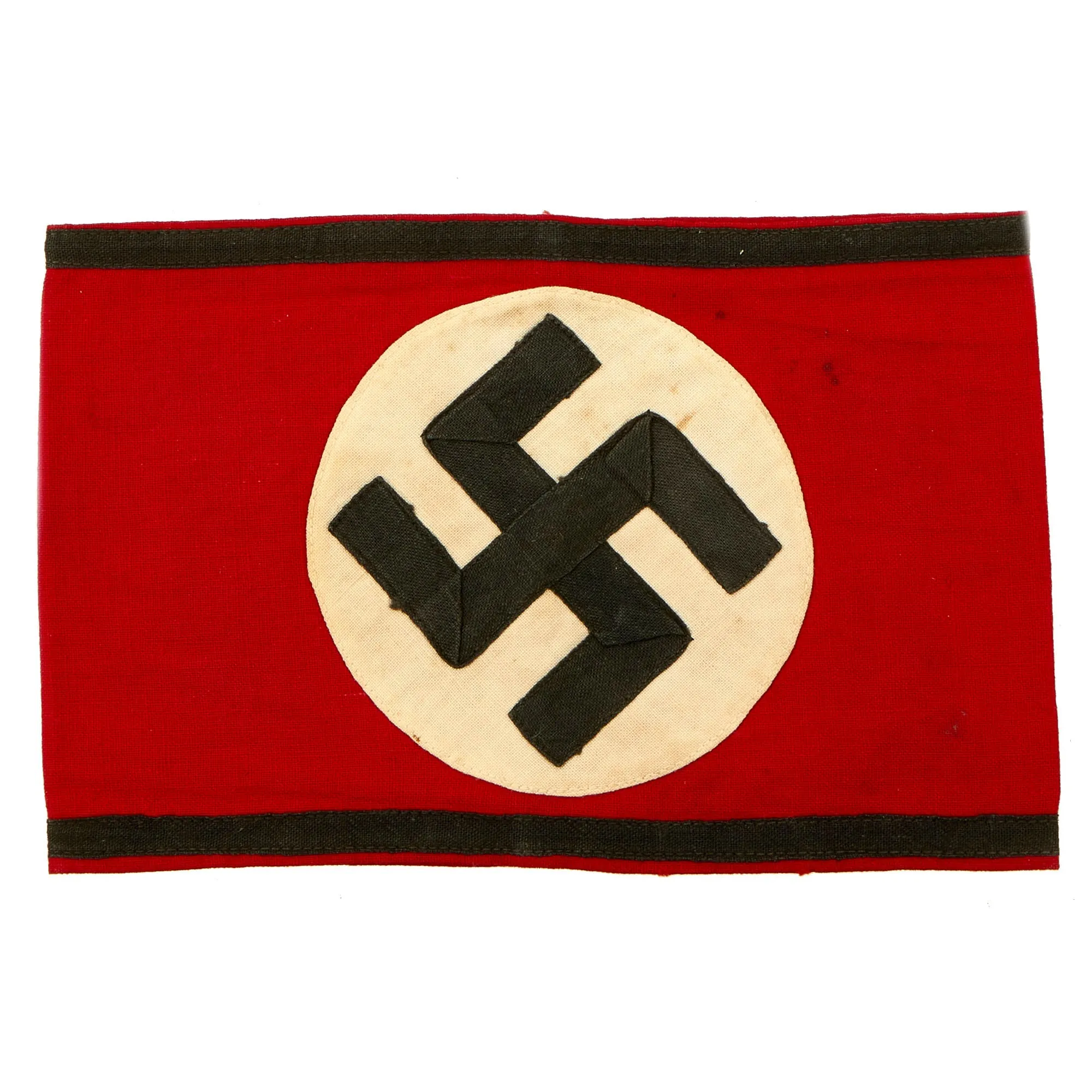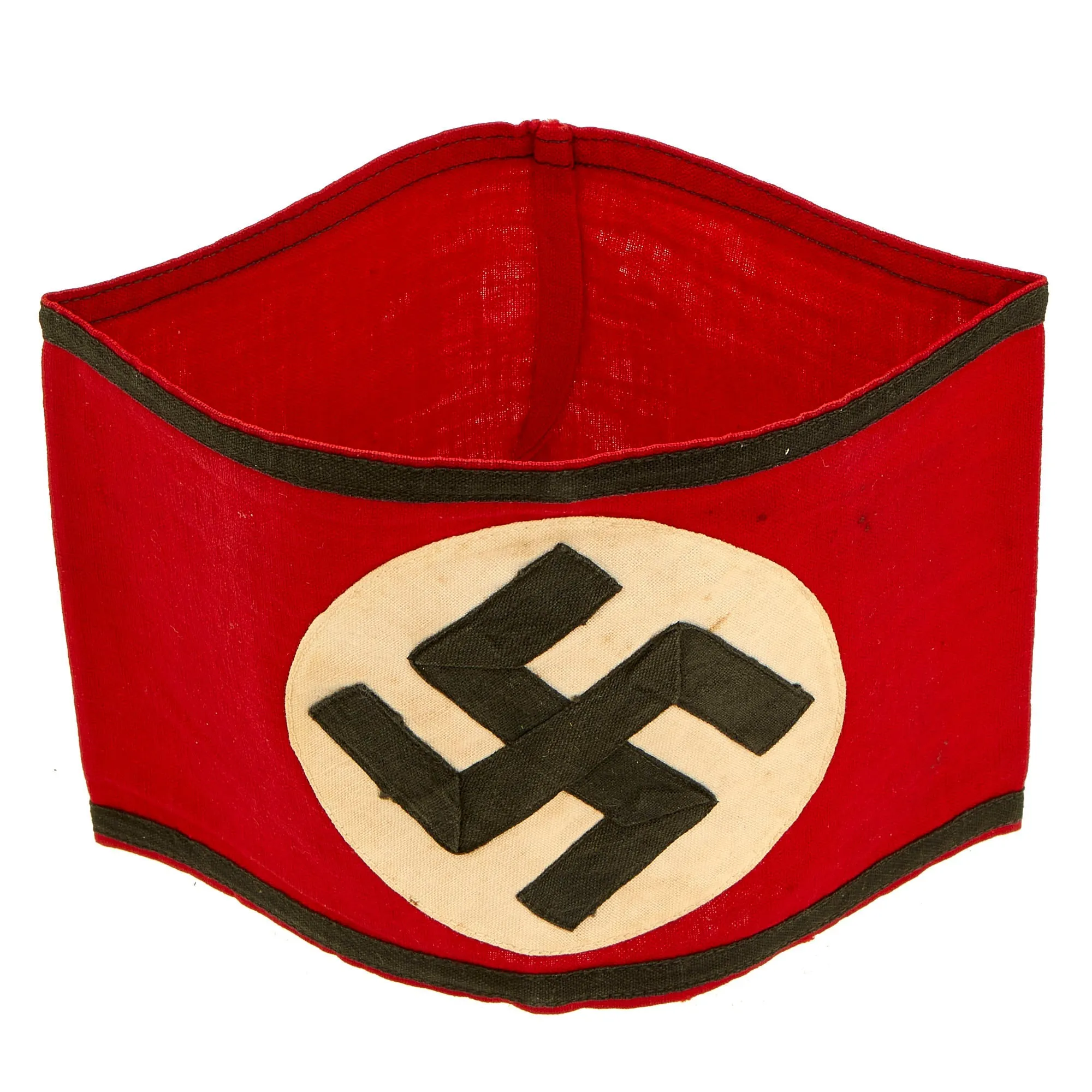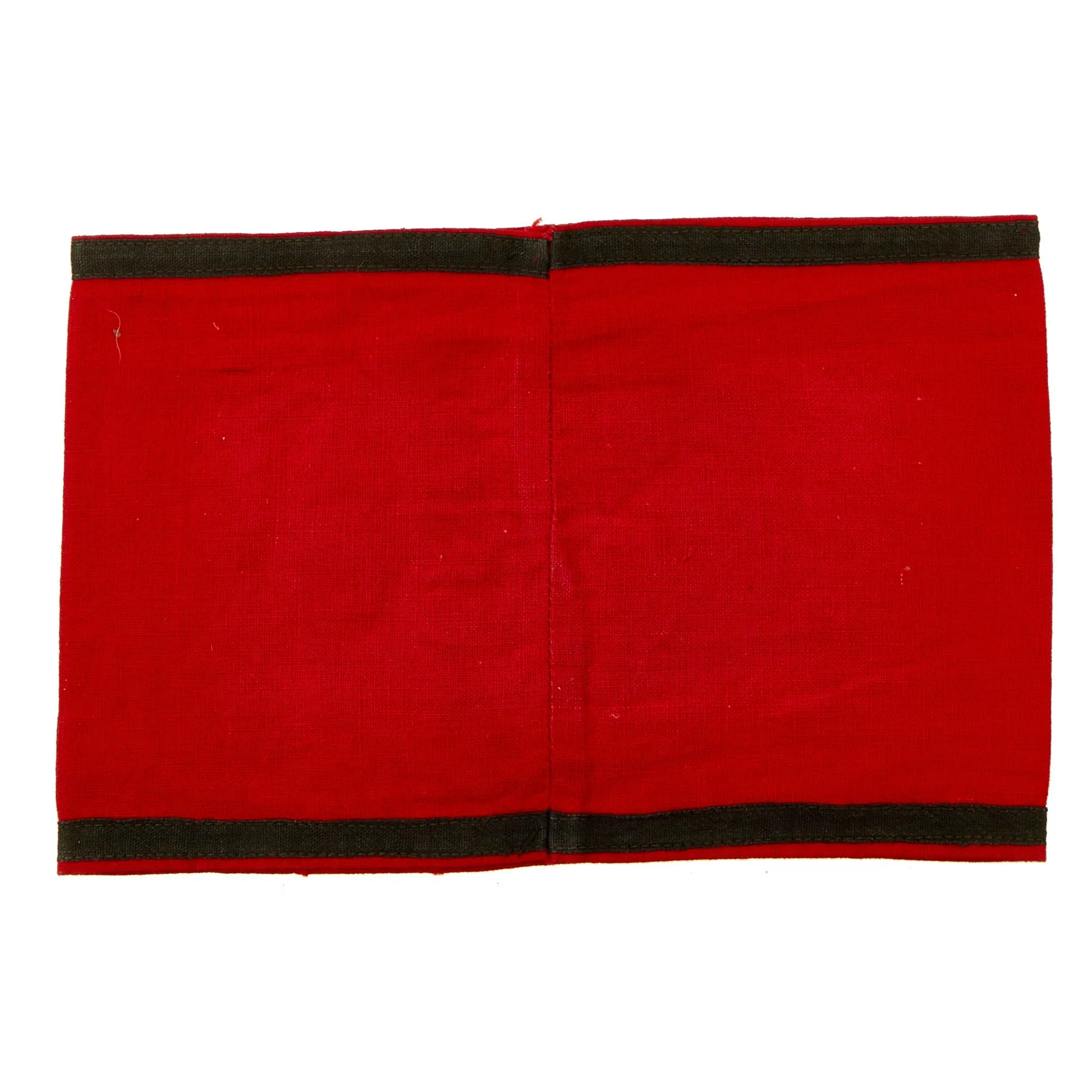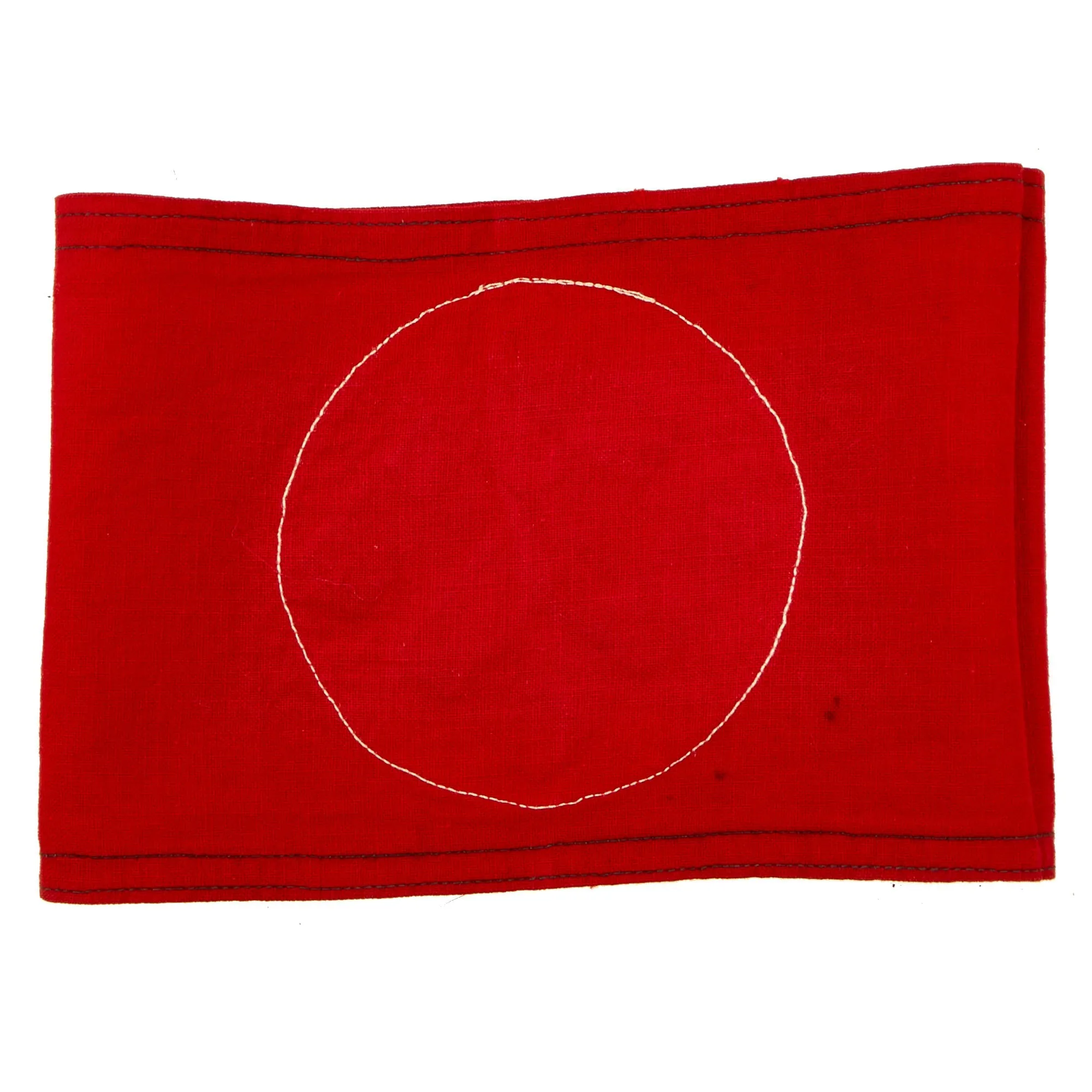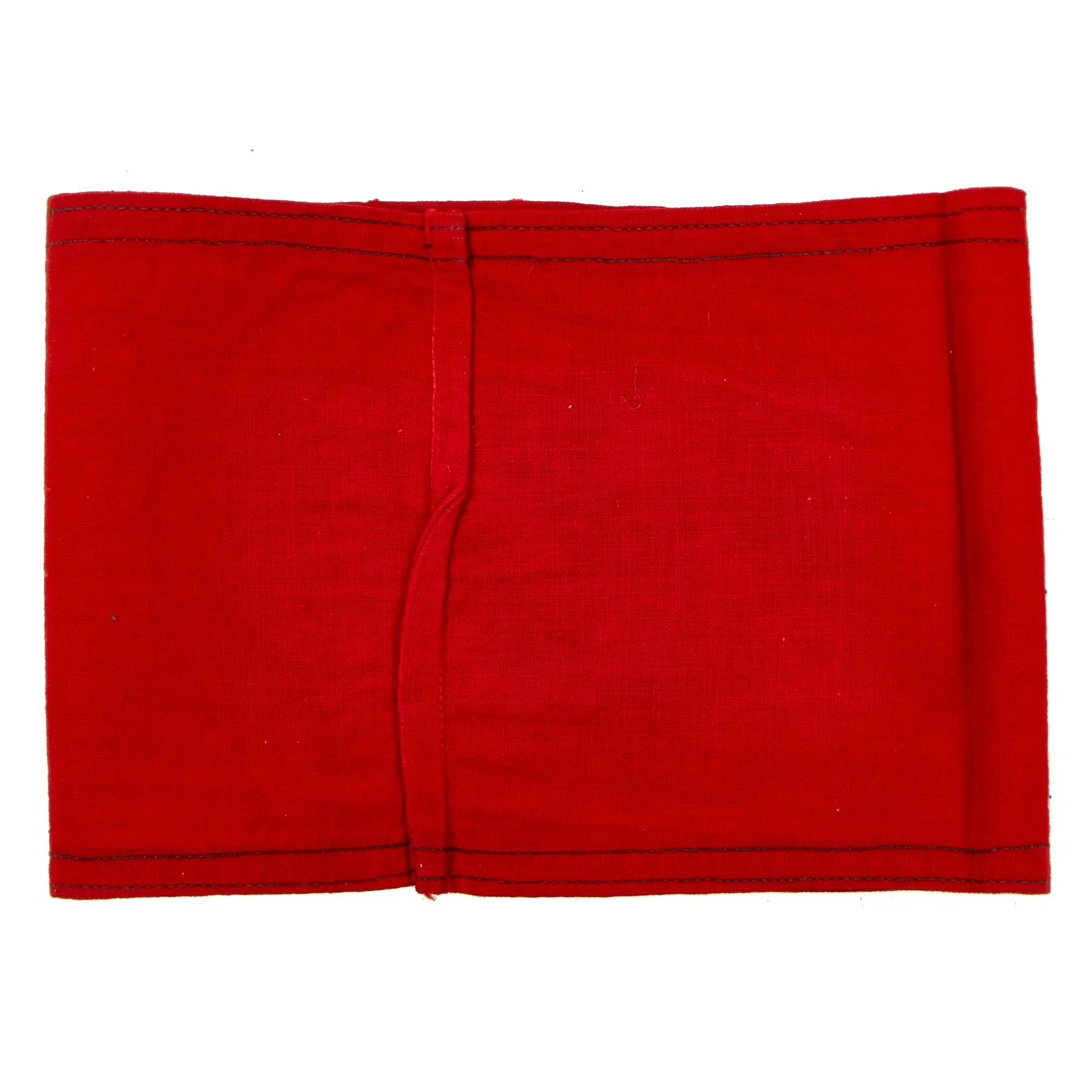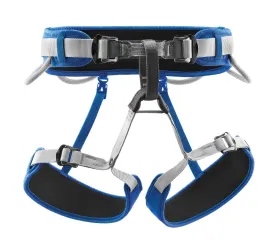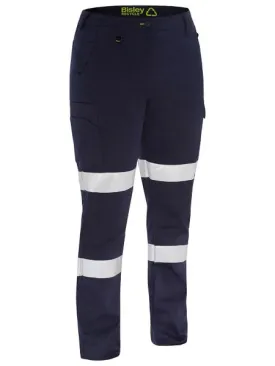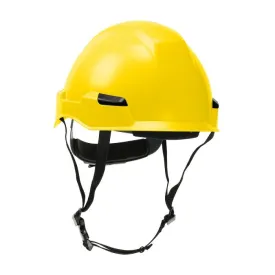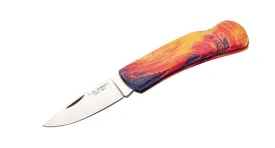Original Item: Only One Available: The SS (Schutzstaffel - 'Protection Squadron') was originally formed in 1925, ostensibly to act as a small, loyal bodyguard unit to protect the Führer, Adolf AH. Under the direction of the Reichsführer-SS Heinrich Himmler, the SS grew to be the most ruthless and feared organization of the 20th century. They were the vanguard of NSDAPsm and eventually controlled nearly every function of German life and much of Occupied Europe.
This is a very good service worn condition Member's Kampfbinde (Armband), with a red cotton band, and a multipiece black swas (hook cross) sewn onto the front inside a white cotton circle. Earlier examples were made using felt and rayon, but this wartime production armband is not nearly so luxurious. This armband is more or less identical to the standard armband of the National Socialist German Workers' Party (Nationalsozialistische Deutsche Arbeiterpartei, abbreviated NSDAP), except for the black borders on the edges.
It is in very good used condition, and measures approximately 14 1/4" x 4 5/8", and is stitched together in the back. We do not see any stitch holes where it was attached to a uniform. It shows some wear to the fabric and color fading, but still presents quite nicely.
A great lightly used example of a rare armband, ready to display!
Nearly every military, civil, political and paramilitary organization in existence during the Third Reich used armbands. Armbands were worn on military and civilian uniforms and also on civilian clothes, from suit jackets to work clothing. They were used to denote membership in organizations, to indicate a specific role or function of the bearer, and as insignia of rank. Many organizations would change the design of their armbands over time, which added to the variety produced. These were manufactured in countless variations, ranging from simple printed bands to elaborately hand-embroidered pieces of the highest quality. Some NSDAP armbands were worn by all members of large organizations and were made by the millions. Others were intended for use at a specific time and place and were unique. Many types were made in very limited numbers. Some bore metal insignia or special identifiers that indicated the wearer’s rank, unit affiliation, or nationality. Armbands were sometimes but not always marked with ink stamps by the issuing authorities.




